Key features of Agentic AI: What makes AI Agents effective for customer experience
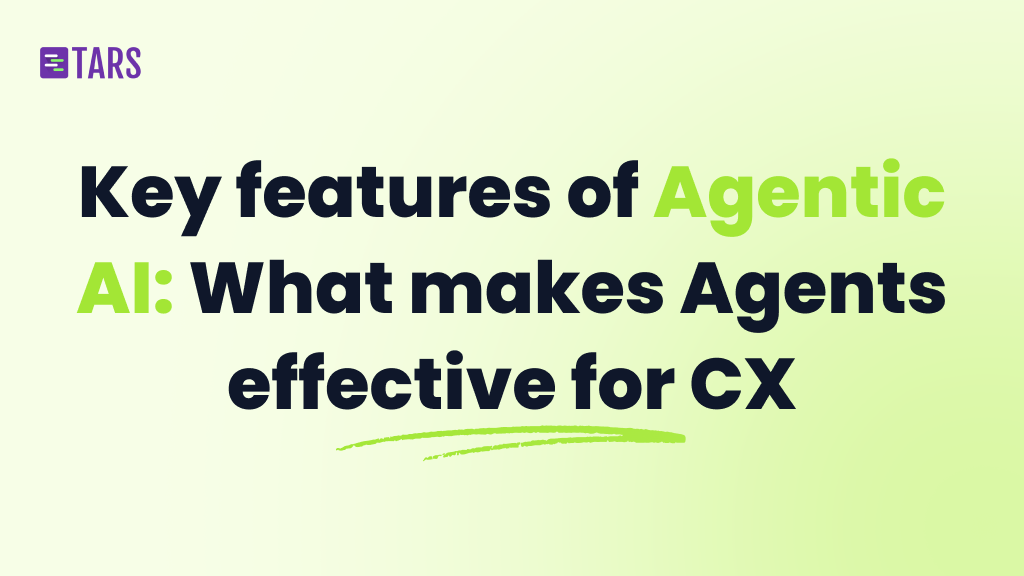
Agentic AI is changing how businesses handle customer interactions. Instead of basic chatbots that follow scripts, AI Agents can think independently, make decisions, and solve problems from start to finish.
If you’re researching AI solutions for customer support or lead generation, understanding what makes agentic AI different will help you choose the right platform. This guide breaks down the key features that separate effective AI Agents from traditional automation tools.
What is Agentic AI?
Agentic AI refers to AI systems with “agency”—the ability to act independently toward specific goals. Unlike regular chatbots that match keywords to responses, AI Agents understand objectives and figure out how to achieve them.
Here’s a practical example:
Traditional chatbot scenario: Customer: “I was charged twice for my subscription” Chatbot: “I understand you have a billing question. Please email billing@company.com or call 1-800-XXX-XXXX”
AI Agent scenario: Customer: “I was charged twice for my subscription” AI Agent:
- Verifies the account and confirms duplicate charges
- Processes the refund immediately
- Updates account settings to prevent recurrence
- Offers a courtesy credit for the inconvenience
- Confirms resolution with the customer
The AI Agent accomplishes the actual goal—resolving the customer’s problem—rather than just providing information about how to get help.
According to Gartner, 33% of enterprise software will incorporate agentic AI by 2028, with these systems handling 15% of business decisions autonomously.
How AI Agents differ from traditional automation
Understanding this difference matters when evaluating customer experience platforms.
Traditional AI systems:
- React to specific inputs with programmed responses
- Follow fixed decision trees
- Complete isolated tasks
- Require updates for new scenarios
- Can’t adapt to unexpected situations
AI Agents:
- Pursue defined goals proactively
- Make contextual decisions in real-time
- Handle complete workflows end-to-end
- Learn from interactions and improve
- Adapt strategies when circumstances change
For customer support and acquisition, this means AI Agents can resolve entire issues or qualify complete leads rather than just answering individual questions.
The seven levels of AI autonomy
Not every system calling itself “agentic” has the same capabilities. AI autonomy exists on a spectrum:
Level 1: Basic chatbots that match keywords to predetermined responses. No real understanding of context or intent.
Level 2: AI suggests responses or actions, but humans must approve before anything happens. Common in tools that help support teams work faster.
Level 3: AI handles specific tasks independently—like updating customer information or scheduling calls—but escalates complex issues to humans.
Level 4: AI manages complete workflows independently within defined rules. Can process refunds, resolve technical issues, or qualify leads without human approval.
Level 5: AI learns from outcomes and adjusts its approach. If one resolution strategy fails, it tries alternatives. Adapts to customer sentiment and communication styles.
Level 6: AI manages long-term objectives across multiple systems. Works toward business goals like customer retention or revenue growth, not just individual task completion.
Level 7: Theoretical level where AI independently identifies problems, sets strategies, and manages operations with minimal oversight. Not yet common in production environments.
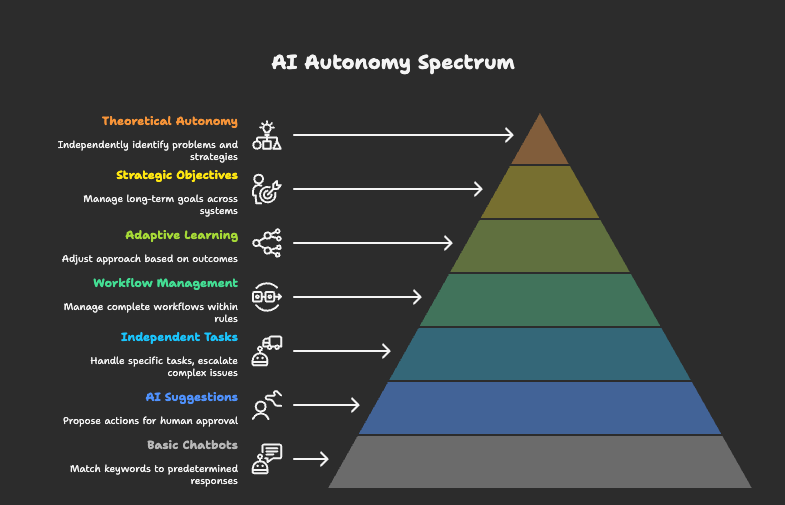
Most customer experience platforms today operate at Levels 3-5, balancing efficiency with appropriate oversight.
Key features of effective agentic AI
1. Autonomous decision-making
The foundational capability that separates AI Agents from basic automation is independent decision-making.
In customer support, this means analyzing situations and choosing actions without pre-scripted paths. The Agent considers:
- Customer history and lifetime value
- Sentiment and urgency level
- Company policies and approval limits
- Past resolution success rates
- Available solutions and their trade-offs
For lead generation, AI Agents assess prospect quality in real-time, deciding whether to:
- Continue qualifying with specific questions
- Route to sales immediately
- Schedule a follow-up for later
- Share resources for self-education
- End the conversation if not a fit
This happens continuously throughout the conversation, not as a one-time classification.
2. Goal-oriented behavior vs task completion
AI Agents understand the “why” behind their actions, not just the “what.”
Task-oriented approach: Customer wants to cancel → Process cancellation
Goal-oriented approach: Customer wants to cancel → Goal is retention → Identify root cause → Offer targeted solution → Only cancel if no alternative works
This goal awareness transforms outcomes. Rather than efficiently processing cancellations, the Agent works to prevent them while respecting customer choice.
For sales, the goal isn’t collecting contact information—it’s booking qualified demos. The Agent’s entire conversation strategy aligns with that objective.
3. Multi-step planning and reasoning
Complex customer issues require sequential problem-solving. AI Agents plan multiple steps ahead and reason through cause-and-effect relationships.
When troubleshooting a technical issue:
- Gather symptoms and error details through targeted questions
- Cross-reference against known issues in the knowledge base
- Test the most likely solution
- If unsuccessful, methodically eliminate other causes
- Escalate with complete diagnostic history if needed
- Document the successful resolution
- Follow up to confirm the issue stays resolved
The Agent thinks through this sequence strategically, adjusting the plan as new information emerges.
4. Knowledge retrieval with RAG
One of the most important features for accurate, up-to-date responses is Retrieval-Augmented Generation (RAG).
RAG enables AI Agents to search your knowledge base, documentation, help articles, and previous cases before responding. Instead of relying solely on training data (which becomes outdated), the Agent:
- Searches for relevant information in real-time
- Retrieves specific details from authoritative sources
- Uses that context to generate accurate, current answers
- Cites sources when appropriate
Advanced RAG implementations include:
Hybrid search: Combines keyword matching with semantic understanding. Finds information even when customers use different terminology than your documentation.
Semantic search: Understands meaning rather than just matching words. Recognizes that “My payment didn’t work” and “Transaction failed” refer to the same issue.
Chunk re-ranking: When multiple relevant pieces of information are found, the system ranks them by relevance to the specific question, ensuring the most useful information shapes the response.
This combination dramatically improves answer accuracy compared to AI trained on static datasets.
5. Real-time adaptability
Customer conversations rarely follow a predictable path. Effective AI Agents adapt their approach based on evolving context.
Conversation flow adaptation: A customer asking about pricing might reveal budget constraints, competitive comparisons, or unclear value perception. The Agent seamlessly pivots from explaining pricing to addressing the underlying concern.
Sentiment-based adjustment: When detecting frustration (through language patterns, repetition, or explicit statements), the Agent:
- Shifts to a more empathetic tone
- Offers immediate solutions rather than asking more questions
- Escalates to a human when appropriate
- Follows up to ensure satisfaction
Channel flexibility: The same Agent maintains context across chat, email, phone transcripts, and social media. Customers can switch channels without repeating themselves.
6. Integration with business systems
An AI Agent is only as capable as its ability to take action. Effective platforms connect to the systems where customer data and actions live.
Essential integrations include:
- CRM platforms (Salesforce, HubSpot, etc.) for customer data
- Help desk software for ticket management
- Billing systems for payment processing
- Scheduling tools for appointment booking
- Knowledge bases for information retrieval
- Analytics platforms for performance tracking
What this enables:
- Pulling customer history during conversations
- Processing refunds without human intervention
- Updating account information automatically
- Creating and routing support tickets with full context
- Checking order or subscription status
- Verifying account details securely
Advanced platforms offer 600+ integrations, ensuring compatibility with your existing tech stack rather than requiring system changes.
7. Continuous evaluation and improvement
AI Agents should get better over time, not remain static. This requires systematic evaluation of performance.
AI evaluation systems monitor:
- Answer accuracy and relevance
- Goal achievement rates (resolution, conversion, etc.)
- Customer satisfaction scores
- Average handling time
- Escalation patterns and reasons
- Conversation quality and policy compliance
The system identifies patterns like:
- Which responses work best for different customer segments
- Where the Agent struggles and needs additional training
- When human escalation improves outcomes
- How conversation strategies affect conversion rates
This creates a feedback loop where the Agent continuously refines its approach based on real performance data.
8. Multi-Agent collaboration
Complex operations often require specialized capabilities working together.
Common Agent specializations:
- Conversation Agent: Manages dialogue with customers
- Knowledge Agent: Searches documentation and retrieves relevant information
- Action Agent: Executes tasks in integrated systems
- Quality Agent: Ensures policy compliance and conversation quality
- Routing Agent: Determines when human escalation is appropriate
These Agents share context through a unified memory system, coordinating seamlessly to deliver fast, accurate responses.
For example: While the Conversation Agent engages the customer, the Knowledge Agent simultaneously searches for solutions, the Action Agent prepares to execute the fix, and the Quality Agent verifies the approach follows company policies—all in parallel.
9. Contextual memory across conversations
Customers expect you to remember their history. AI Agents with persistent memory maintain context across:
- Previous conversations (even weeks or months apart)
- Purchase and subscription history
- Past issues and their resolutions
- Communication preferences
- Account details and customizations
When a returning customer makes contact, the Agent immediately understands:
- What was discussed last time
- Whether previous issues were fully resolved
- What solutions worked in the past
- The customer’s typical communication style
This transforms interactions from transactional exchanges into ongoing relationship management.
10. Natural language understanding
While sophisticated language processing isn’t unique to agentic AI, it’s essential for everything else to work.
Effective AI Agents:
- Understand intent behind different phrasings (“cancel my account,” “I want out,” “how do I stop paying” all mean the same thing)
- Recognize questions that aren’t explicitly stated
- Detect emotional subtext (frustration, urgency, confusion)
- Ask clarifying questions when intent is ambiguous
- Adjust formality and technical detail based on the audience
This capability ensures customers can communicate naturally rather than learning specific commands or keywords.
11. Proactive engagement
Rather than waiting for customers to initiate contact, AI Agents can start conversations when it makes strategic sense.
For support:
- Customer usage patterns suggest they’ll hit a known issue → Agent reaches out with a preemptive solution
- Multiple failed login attempts detected → Agent offers password reset assistance
- Feature the customer needs gets added → Agent introduces it
- Subscription renewal approaching → Agent confirms satisfaction and smooth renewal
For acquisition:
- Prospect downloads multiple resources → Agent starts a conversation
- Visitor spends significant time on pricing page → Agent offers to answer questions
- User matches ideal customer profile → Agent initiates personalized outreach
- Trial nearing expiration → Agent reaches out to ensure success
This proactive approach prevents problems, captures opportunities, and demonstrates attentiveness.
Why these features matter for customer experience
The capabilities above enable specific business outcomes:
Customer support:
- 70-90% automation of common inquiries
- Faster resolution times (seconds vs minutes or hours)
- Consistent quality 24/7 across all time zones
- Reduced support costs while improving satisfaction
- More time for human agents to handle complex cases
Lead acquisition:
- 24/7 lead engagement without staffing constraints
- Personalized conversations at unlimited scale
- Higher conversion rates through timely engagement
- Complete qualification before sales team involvement
Customer retention:
- Early identification of churn risk
- Proactive issue resolution
- Timely engagement at critical lifecycle moments
- Consistent relationship management
- Data-driven retention strategies
What to look for when evaluating AI Agent platforms
Not all platforms offering “agentic AI” deliver these capabilities equally. When evaluating solutions:
Verify actual autonomy levels: Can the Agent complete workflows independently, or does it just suggest actions for humans to execute?
Check knowledge retrieval sophistication: Does it use advanced RAG with hybrid search and semantic understanding, or basic keyword matching?
Review integration breadth: How many pre-built integrations are available? Can it connect to your specific systems?
Assess evaluation capabilities: Does the platform provide systematic performance monitoring and continuous improvement?
Test adaptability: How does the Agent handle unexpected questions or workflow deviations?
Examine memory systems: Does it maintain context across conversations and sessions?
Request transparency: Can you understand how the Agent makes decisions and trace its reasoning?
Implementation considerations
Successful AI Agent deployment requires planning:
Start with clear goals: Define what success looks like—specific metrics like resolution rate, conversion rate, or customer satisfaction scores.
Establish appropriate guardrails: Determine what the Agent can do independently vs what requires human approval, especially for high-value or sensitive decisions.
Build comprehensive knowledge bases: AI Agents are only as good as the information they can access. Invest in organized, accurate documentation.
Plan human escalation paths: Define clear criteria for when human involvement improves outcomes, and ensure smooth handoffs with full context.
Monitor and optimize continuously: Use evaluation systems to identify improvement opportunities and refine Agent performance over time.
Ensure data privacy and security: Implement appropriate controls for customer data access and comply with relevant regulations (GDPR, CCPA, etc.).
The future of AI Agents in customer experience
The technology continues evolving rapidly:
Greater autonomy: AI Agents will handle increasingly complex scenarios with less oversight, managing longer-term objectives across customer lifecycles.
Enhanced emotional intelligence: Better recognition of emotional nuances and more empathetic responses that build stronger customer relationships.
Predictive capabilities: More accurate anticipation of customer needs, potential issues, and optimal engagement timing.
Cross-functional coordination: Tighter integration between marketing, sales, support, and success operations for truly unified customer experiences.
Improved reasoning: More sophisticated problem-solving for complex, unique situations that don’t match standard patterns.
Choosing the right AI Agent platform
The key features of agentic AI—autonomous decision-making, goal-oriented behavior, multi-step planning, advanced RAG with hybrid and semantic search, real-time adaptability, system integration, continuous evaluation, multi-Agent collaboration, contextual memory, natural language understanding, and proactive engagement—determine whether a platform delivers real value or just marketing promises.
For businesses evaluating AI for customer experience automation, focus on:
- Autonomy levels that match your use cases
- Sophisticated knowledge retrieval with RAG, semantic search, and re-ranking
- Extensive integration capabilities (ideally 600+ pre-built options)
- Systematic evaluation and improvement mechanisms
- Appropriate governance and security controls
The difference between basic chatbots and effective AI Agents is substantial. Basic systems answer questions. AI Agents solve problems, qualify leads, prevent churn, and drive measurable business outcomes.
When implemented thoughtfully with the right platform, agentic AI transforms customer experience from a cost center into a competitive advantage—delivering better service at lower cost while freeing human teams to focus on high-value interactions.
The technology is mature and proven. The question is whether your organization is ready to implement it effectively.
A writer trying to make AI easy to understand.
- What is Agentic AI?
- How AI Agents differ from traditional automation
- The seven levels of AI autonomy
- Key features of effective agentic AI
- 1. Autonomous decision-making
- 2. Goal-oriented behavior vs task completion
- 3. Multi-step planning and reasoning
- 4. Knowledge retrieval with RAG
- 5. Real-time adaptability
- 6. Integration with business systems
- 7. Continuous evaluation and improvement
- 8. Multi-Agent collaboration
- 9. Contextual memory across conversations
- 10. Natural language understanding
- 11. Proactive engagement
- Why these features matter for customer experience
- What to look for when evaluating AI Agent platforms
- Implementation considerations
- The future of AI Agents in customer experience
- Choosing the right AI Agent platform


Build innovative AI Agents that deliver results
Get started for freeRecommended Reading: Check Out Our Favorite Blog Posts!
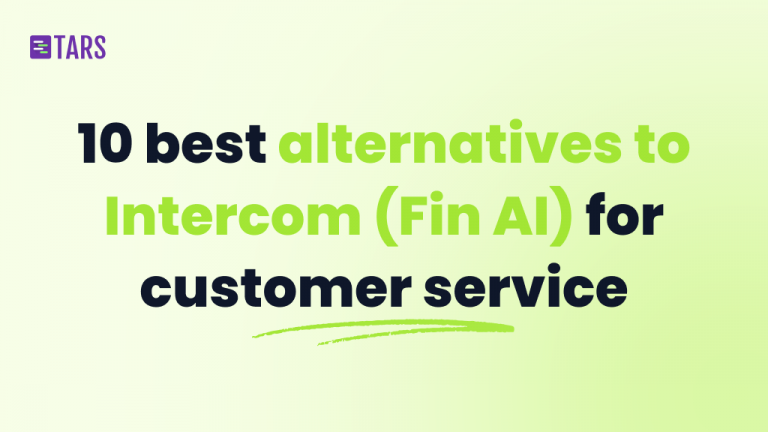
10 best alternatives to Intercom (Fin AI) for AI-powered customer service [2025]
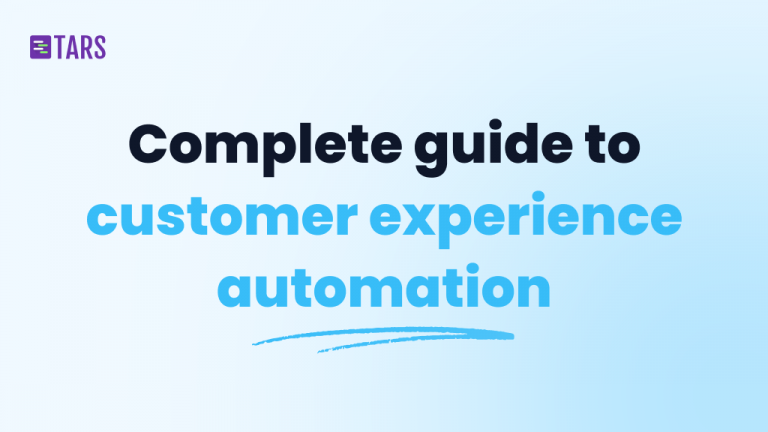
Customer experience automation: The complete guide to CXA in 2025
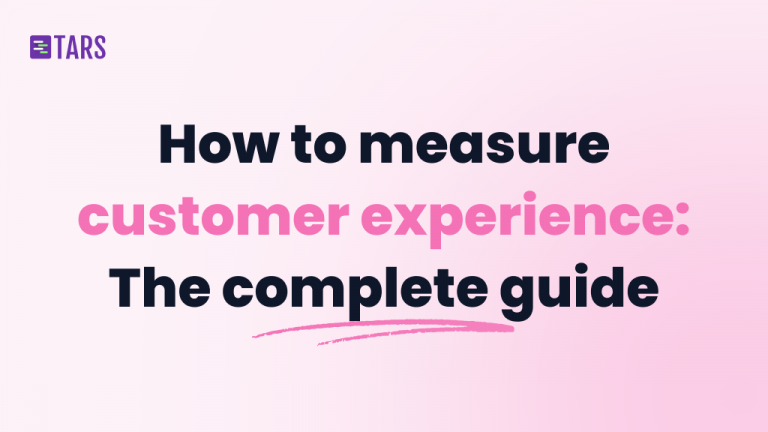
How to measure customer experience: The complete guide for AI-powered support and growth

Our journey in a few numbers
With Tars you can build Conversational AI Agents that truly understand your needs and create intelligent conversations.
years in the conversational AI space
global brands have worked with us
customer conversations automated
countries with deployed AI Agents